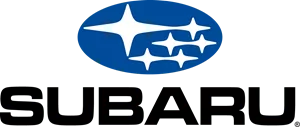Over the last decade, the workplace has changed drastically. A growing number of companies have an extended workforce – freelancers, outside sales representatives, and other roles that no longer directly fall in a company setting. Companies can no longer rely on conventional training techniques. The time has come to make some significant changes to meet the modern workforce’s new training demands.
If you are an employer who understands the vital role training plays to ensure organizational growth, you are probably using a learning management system.
Before we continue, let’s look at what a learning management system is and its related benefits.
A learning management system (LMS) is the foundation of online learning. It is a cloud-based or enterprise software application that provides the framework that handles all aspects of your company’s learning process. In short, it’s a system that allows you to deliver, house, and track your training content. It can also handle things such as compliance and skills gap analysis.
Learning management systems first appeared in the higher education sector, but then expanded to the corporate sector in the 2000s.
Some of the main benefits of an LMS are:
-
Cost-savings.
An LMS empowers you to avoid employee travel costs and printed materials, and replace them with eLearning materials like videos or presentations. It optimizes training expenditure and minimizes payment for facilities and instructors.
-
Tracks learner performance, progress, and success easily.
With an LMS, you can generate training reports, and track learner progress and investment return.
-
Consistency of training.
One of the biggest benefits to an LMS is consistency. Consistent learning and training are provided for all employees by supplying a single source for course materials, instructions, and content.
-
Keeps companies up to date with compliance regulations.
Regulated industries like pharmaceutical, biotech and oil and gas companies must train, assess and report for compliance purposes. And regardless of your industry, a growing number of states are making certain training courses mandatory for compliance. An LMS helps you satisfy all regulatory and legal requirements.
-
Supports the onboarding process while minimizing HR costs.
An LMS helps learning and development teams with onboarding by facilitating the training requirements for all new hires. This can include product information, company history, and other compliance and risk mitigation courses. And if there are any gaps in a new hire’s hard or soft skills, an LMS can create a targeted training plan.
-
Enables training regardless of geographical location.
One of the most significant benefits of online learning is that it’s available 24/7 for an increasingly remote and global workforce. No matter where your employees are or when they need to access information, the training is always available.
-
Ability to scale with you.
Determine your needs and make sure you select an LMS that can adapt and change with your business’s growing needs. A scalable LMS will accommodate your business as it grows, saving you money, time, and effort.
Examples of features in an LMS to look for that promote adaptability and growth are:
Data.
It must be able to handle a large amount of data.
Users.
An LMS should accommodate a large number of users accessing the system from all over the world at any time.
Administration.
Different branches of an organization should be able to access the LMS to obtain the information they need.
It is also important to know the difference between a learning management system (LMS) and a learning content management system (LCMS). As mentioned before, an LMS is a system that allows you to deliver, house, and track your training content but is generally not used to create course content.
A learning content management system (LCMS) focuses on learning content. It provides authors and designers the means to create eLearning content more efficiently to meet the needs of individual learners or groups of learners.
Although they are distinct from one another, they also complement each other. When integrated, both systems’ information can be exchanged, resulting in a more comprehensive tool for the administrator and a better learning experience for the user.
So you have an LMS in place, but is it still effective, or do you need to rethink your strategy?
Due to technology advancing at a breakneck pace, the way workers learn and consume learning is changing. You may find that your current LMS system is just not working effectively anymore, and it is time to refresh your approach.
Here are four reasons why you should rethink your LMS and LCMS strategy to ensure you keep up with the modern workplace and retain and attract top talent in the job market:
1. Tech-savvy millennials are taking over the job market.
Millennials have different expectations for learning and work than the previous generation. They see ongoing, easy access to learning as a must-have, and many companies fall short when it comes to developing millennial leaders. To rectify this, you need to provide leadership training to this always-connected generation in a format they will find engaging and useful.
2. Job skills have a shorter shelf life.
Rapidly changing skills requirements affect all types of jobs, and your business may be at risk if you fail to adapt. You need to provide learning content that evolves fast to keep up with the pace at which required skills change and implement a learning content strategy that’s flexible and easy to update.
3. The use of mobile devices is exploding.
More employees are bringing their own digital devices to work. Your learning content management system must be mobile-friendly and allow workers to access it anywhere and anytime.
4. Learning needs are no longer job-specific.
Jobs in today’s world demand agility. A successful learning content management strategy must have broad applications and educational goals. Cultivate a holistic learning environment and create a learning space that gives employees the freedom to expand their knowledge outside their comfort zone and make learning accessible all the time.
Conclusion
The main purpose of a learning management system (LMS) is to empower learning and development (L&D) departments with the tools needed to develop and train their employees. You will save a lot of effort, time, and money if you make sure you choose the correct LMS for your specific needs or change and adapt your LMS if you are already using one.
Coggno offers a comprehensive private learning management system you can create and custom-make to fit your needs.
You can have a look at it here and at our course catalog here.




















